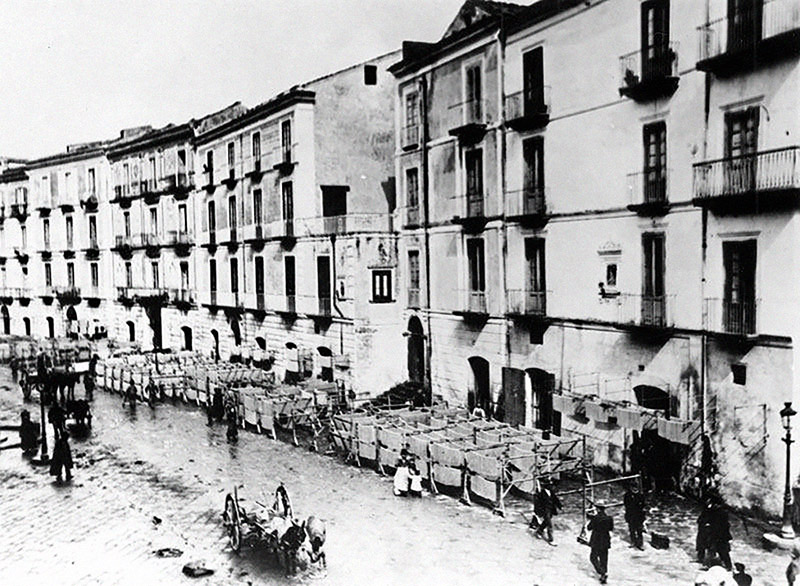SHARRYLAND


A love of pasta: the Gragnano IGP
At the foot of the Lattari Mountains comes a product that has conquered the world

Where is

Of ingenuity and passion
Gragnano pasta, with the PGI mark since 2013, is now known worldwide and continues to travel from the shelves to the kitchens of homes and restaurants, from Naples to New York. But perhaps not many people really know the place where this pasta was born and raised, an area where the ingenuity of the inhabitants and the passion for their work have made all the difference.
The pasta tradition began in Gragnano in the 16th century with the founding of the first family-run pasta factories and continued to develop over the following centuries. So much prestige was gained by Gragnano pasta in the 1800s that in 1834 an urban plan was even initiated to redesign the city's spaces. What does urban planning have to do with macaroni? It has everything to do with it! The dough was spread out to dry in the open and the new layout of streets and buildings favored the flow of air, thus optimizing the drying process!
 Pasta stretched out to dry in the ancient pasta factories of Gragnano
Pasta stretched out to dry in the ancient pasta factories of GragnanoOne cannot trace the history of Gragnano pasta without mentioning the nearby Valley of the Mills. Here, for more than 600 years, dozens of water-powered mills produced the flour needed to sustain the population and make pasta, before being supplanted by modern machinery. The ruins of the mills can still be visited today and give all the charm of ancient traditions.
Pasta from Gragnano? Yes, chef!
The genuineness of a product comes from the combination of many elements: the quality of the raw materials, the refinement of techniques, imagination, and passion. The attention in the processing of this extraordinary pasta begins with the raw materials themselves: durum wheat semolina and the purest water from the local aquifers, which flows downstream from the sources of the Monti Lattari.
 Slow, low-temperature drying technique
Slow, low-temperature drying techniqueThis is followed by gramolatura, to refine the dough and make it elastic, and bronze drawing, which gives the final shape and characteristic porosity to this little masterpiece. The last sacred ritual is the slow and gentle drying, which can vary between 4 and 60 hours depending on the size, with a temperature ranging between 40° and 85°.
Even the creation of a recipe flourishes from such special attention, and it is nice to think that there is a kind of passing of the baton, from the pasta maker to the cook. If Gragnano pasta is chosen by so many national and international chefs for their dishes, perhaps it is precisely because of this shared intent. And what intent is more noble and right than to make sight, smell and taste rejoice?
Enter the Map of Italy's Undiscovered Wonders and find treasures where you least expect it... Inspire, Recommend, Share...
Collections
The Map thanks:
Enter the Map of Italy's Undiscovered Wonders and find treasures where you least expect it... Inspire, Recommend, Share...
Where is

Collections

